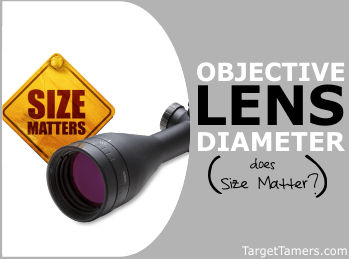
This is one of the most asked-about features of a rifle scope - objective lens, their size, and their role in the hunt.
Is bigger always better? Can I get more low light use out of a larger lens? Does bigger mean brighter?
As a result of so much confusion, we here at Target Tamers feel it's fitting to inform you about the benefits of getting the most use out of different size objective lens.
As just one factor that you need to consider when shopping for a rifle scope, we'll discuss tips that establish what size is best for you, how objective lenses work, and everything in between that establishes their role in the hunt.
Rifle Scope Anatomy Recap
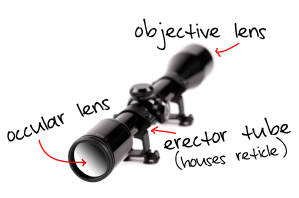
The front of the rifle scope is the part that is furthest away from your eyes. This end of the scope is going to be the largest part of the entire tube body and is called the Objective Bell. The objective bell is where the objective lens are housed.
The concept surrounding objective diameter is: the wider it is, the more light is allowed into the scope to be transmitted to your eye. With the following tips on maximizing objective diameter use, we'll expand on this concept and everything else that can be added to perfect image quality.
Tips to Choosing Rifle Scope Objective Diameter
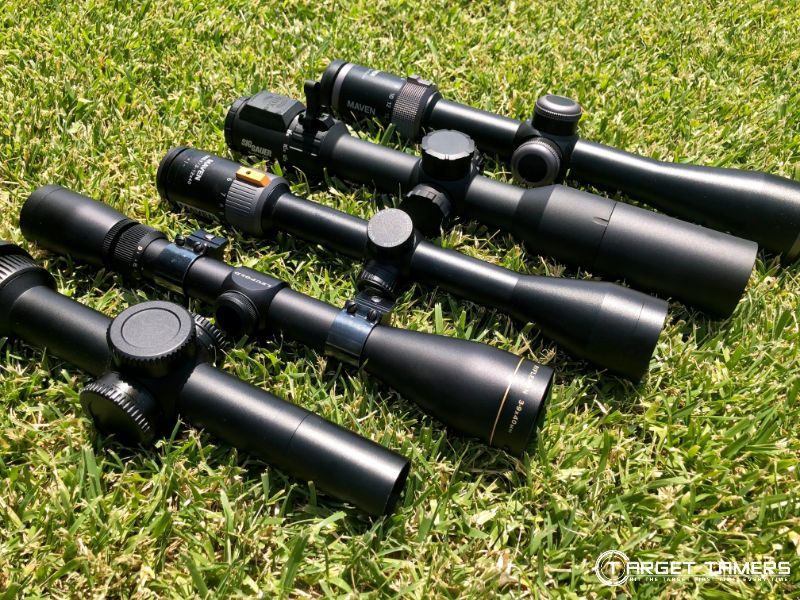
1. Choose the appropriate lens size for the best mounting position.
You ask why? Being aware of the size of the objective diameter of the lens will give you an idea as to how the scope is going to sit on your rifle.
The larger the size of the objective diameter, the larger the objective bell is going to be. A very large size can determine the scope clearance and it can interfere with your mounting position.
How? You'll need higher mounting rings to keep the objective bell off your rifle's barrel. This can cause poor eye alignment and discomfort, and it can compromise on having a repeatable cheek and weld method.
Leupold's discontinued VX-3L rifle scopes had an ingenious feature that eliminated the high mounting issue. Still providing the benefits of a large objective diameter, they carved out a section of the objective lens and bell to create a concave design that contours perfectly with the barrel of your rifle so that you could still mount your scope as low possible.
But, a smaller or mid-range sized objective diameter is going to allow for a lower profile. You'll be able to achieve a consistent cheek and weld method, fast and easy eye alignment, and you can buy and use standard height mounting rings.
2. Consider the Weight
Larger objective diameter lens can quickly add to the overall weight of the rifle scope ultimately making it top heavy and awkward. Those with adjustable objectives (AO) also tend to be the heifers of the lot since added glass weight can get cumbersome.
So, if you're concerned with weight, bulkiness, and wieldability you'd probably want to go with a standard 40 mm lens. They tend to be in the 12 - 15 ounce range. But, if you don't mind toting around a few extra ounces in the 16 - 21+ ounce range, moving up to 50+ mm lens might be for you.
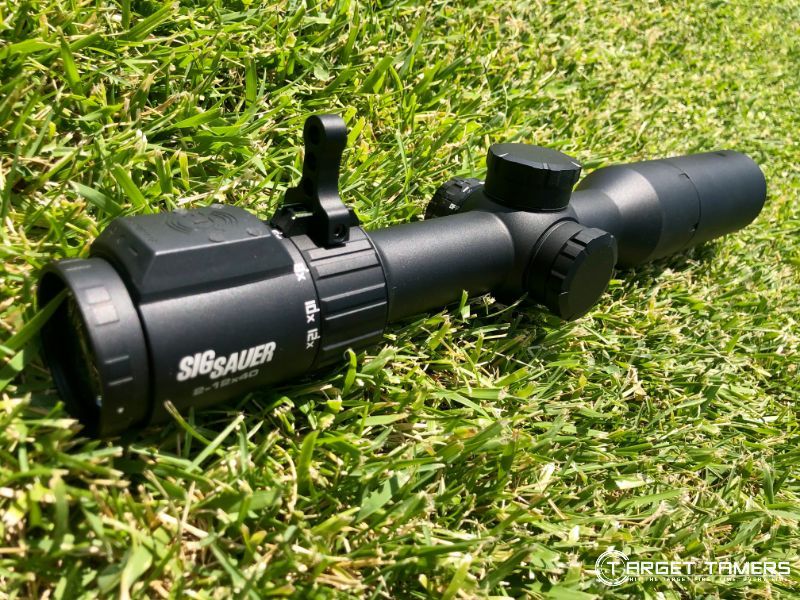
3. Don't Forget About Glass Quality
One of the biggest reasons hunters look for larger objective lenses is because they want a brighter image.
Clarity and brightness also has a lot to do with glass quality, not just size. Glass impurities and finishing processes can affect the clarity of your image.
If you want a good visual experience through your scope, you're going want to look for quality glass that has coatings to improve light transmission and prevent reflection and glare. Check out rifle scopes under $1000 and these high-end scopes for the best glass quality.
4. Know Your Magnification Settings
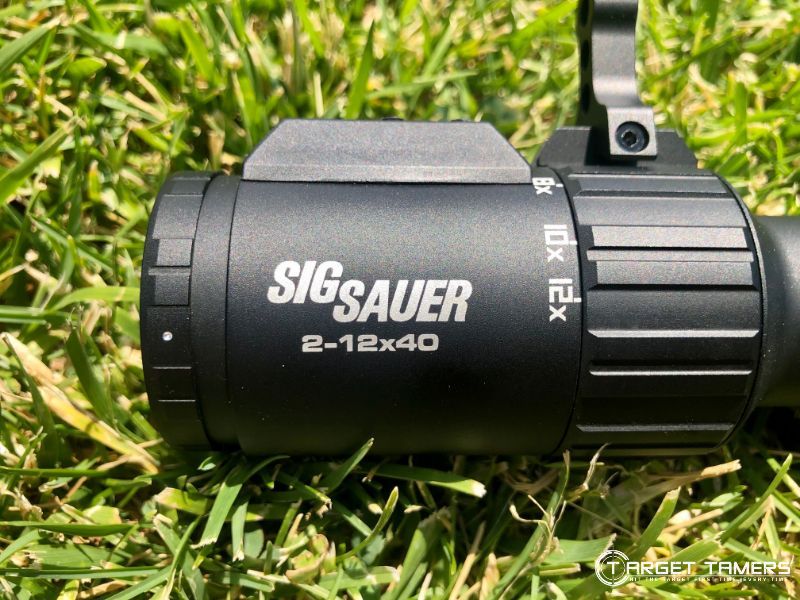
Another reason shooters look to the size of the objective lens is because they want to stay out a little longer and range out a little further.
As the sun goes down, your effective hunting range gets shorter and shorter with a high powered optic. You'll need to bring the rifle scope magnification down to get as much usable light as possible.
The rate at which your useful hunting range is determined by available light will slow down with a 50 mm objective lens versus a 36 mm or 40 mm lens.
5. Usable Exit Pupil Is Key
Saving the best and longest tip for last, it's all about the exit pupil and its role with objective diameter size.
The exit pupil is that circle or beam of light that you can see in the ocular lens (the eyepiece) if you were about 10 inches away from it. This shows you how much light is being transmitted to your eye and it can ultimately give you an improved and brighter image as you turn down the magnification setting.
The exit pupil can be calculated by dividing the objective diameter (mm) by the magnification. Now, let's break this up into two categories:
The Scope
The formula to calculate the exit pupil given above tells you that a scope set on its lowest magnification setting will provide you with the largest beam of light. Conversely, the highest magnification setting will provide you with the smallest beam of light.
The math: a 3-9X50 rifle scope has an exit pupil of 16.67 mm to 5.56 mm (50 divided by 3, then 50 divided by 9). That's a lot of light your eyes can be bathed in. So, does a larger beam of light equal a brighter image in the dark? Not necessarily.
While it may seem like "the larger the better" concept is proving to be the theme here, there is a catch-22.
The Human Eye
The human pupil is only capable of expanding between 4 mm and maybe 8 mm at the most. The average is about 7 mm for young adults with great eyesight. And, to even get these pupil levels to be at their maximum, you have to be in total darkness for at least half an hour (30 mins). It seems unlikely that you're going to be hunting in these conditions, unless you're sitting in complete darkness enjoying staring into the depths of nothingness.
Back to our example, if you've got your scope on the lowest magnification and you've got an exit pupil of 16.67, or pretty much anything larger than 8 or 9 mm, all that light is a waste. It's not profitable since your eyes won't be able to use it at all.
To bring this more into perspective, if you're in your late forties or fifties, you can thank the aging process for your pupils only opening to a maximum of around 5 to 6 mm. Assuming your eyes only open to 5 mm, any beam of light from a 3-9X50 rifle scope will deliver more light than your eyes can productively use.
According to the math, the larger objective lens size is all hype if you're considering exit pupil alone. In low light conditions, brightness and clarity improves with lower magnifications whereas image quality will darken and perhaps blur at higher magnifications.
From what we now know about how everyone's pupils dilate anywhere between 4 - 8 mm, we can see that a brighter image is also largely dependent upon your own set of eyes rather than the scope's potential for maximum exit pupil. This also explains why there's many differing opinions about whether or not larger diameter lens make a difference or not.
Another thing about larger objective lens - you can still get more magnification use out of a high powered optic before you start to see deteriorating image quality when compared with a scope of comparable quality but just with a smaller objective lens.
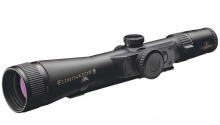
For example, on a 4-16X50 model at 10X your exit pupil is 5 mm. This is great for most people. But, a 4-16X40 model at 10X is 4 mm - still great for most people. But, you wouldn't get this slightly diminishing level of brightness until you cranked up the magnification level to 12X on the 4-16X50 model. So, for a little more flexibility with using higher powered optics for more usable light during low light conditions, a 50+ mm objective lens is a good option.
Additional benefits to a large exit pupil goes beyond just drowning your eyes in light, you also have greater flexibility to look through the scope and get on target in a hurry.
With a large exit pupil, you can quickly get on target for when that trophy surprisingly strolls into your line of sight. While precision and target shooters may have the luxury of painstakingly finding that dead on spot with a 2 mm exit pupil, hunters will appreciate the freedom of still getting dead on even if your eye isn't perfectly aligned with the optical axis. Your eyes also won't have to work as hard for an ideal visionary experience.
Pros and Cons of Various Sized Objective Lenses
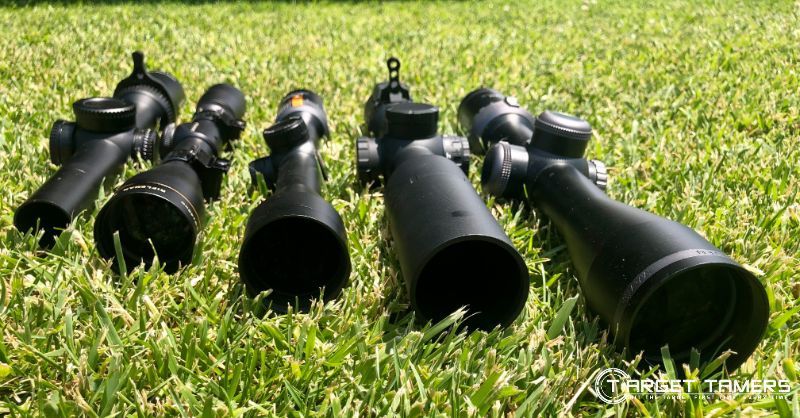
With all of the tips in mind, below is a round-up of the benefits and drawbacks to various objective lens size ranges.
Small Objective Lens: 28 mm and Smaller
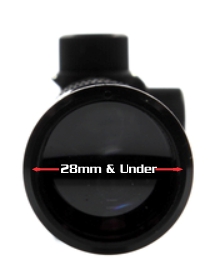
Pros:
- More efficient with low powered scopes
- Provides a low profile mount
- Enables a sufficient and comfortable cheek and weld method
- Can be more light-weight and compact, weighing around the 10 - 13 ounce range
- Popular in the military and tactical community
- Constructed on 1 inch tube body - the smaller size prevents unintentional bangs and bumps while in use
- Smaller surface size has less chance of reflecting light that gives away your position
- Cheaper than other scopes with larger diameter sizes
Cons:
- Use for close range hunting only
- Efficient for low powered scopes
- Tends to be for firearms with little to no recoil such as a .22 rimfire or air gun
- Not intended for recoil abuse from higher caliber rifles and bullets
Medium Objective Lens: 30 - 44 mm Range
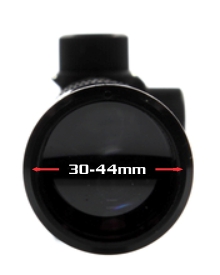
Pros:
- More realistic usable exit pupils for low light hunting
- Provides a low profile mount
- Enables a sufficient and comfortable cheek and weld method
- Light-weight and compact, only weighing around the 12 - 15 ounce range
- Constructed on 1 inch tube body - the smaller size prevents unintentional bangs and bumps while in use
Cons:
- Effective useful range shortens faster than 50+ mm lens
- Low light hunting hours are cut shorter than 50+ mm lens
Large Objective Lens: 50 mm and Higher
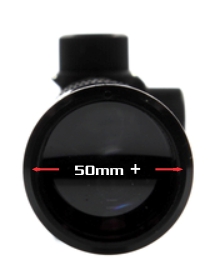
Pros:
- Efficient for long range and extreme long range distance shooting
- Useable exit pupils for low light hunting
- Improved image quality in low light conditions
- Ability to use higher magnifications longer as available light diminishes
- Larger objective size makes high magnifications more useful and image quality seem brighter
- Flexibility to find sweet spot faster with larger exit pupil
- Wider and seemingly brighter field of view reducing eyestrain
- More commonly constructed on a 30 mm tube for added robustness and durability
Cons:
- Heavy, bulky, and can be impractical for your hunting style
- Makes scope top heavy
- More expensive for larger diameter size
- Needs higher mounting rings
- Can affect comfortable cheek and weld method
- Can affect proper eye alignment
- Larger surface size can reflect light that gives away your position
- Larger size can collect more dirt and muck in harsh conditions obscuring view
Get the Right Sized Objective for the Job
To determine which size objective lens is best for you, you need to evaluate what type of hunting or shooting you're going to be involved in.
If you're looking for a rifle scope to use on a .22 rifle for plinking on a Sunday afternoon or pellet shooting to pass the time, a low powered and small objective lens will allow you to hunt within close ranges providing enough light gathering capabilities to get on mark with every shot.
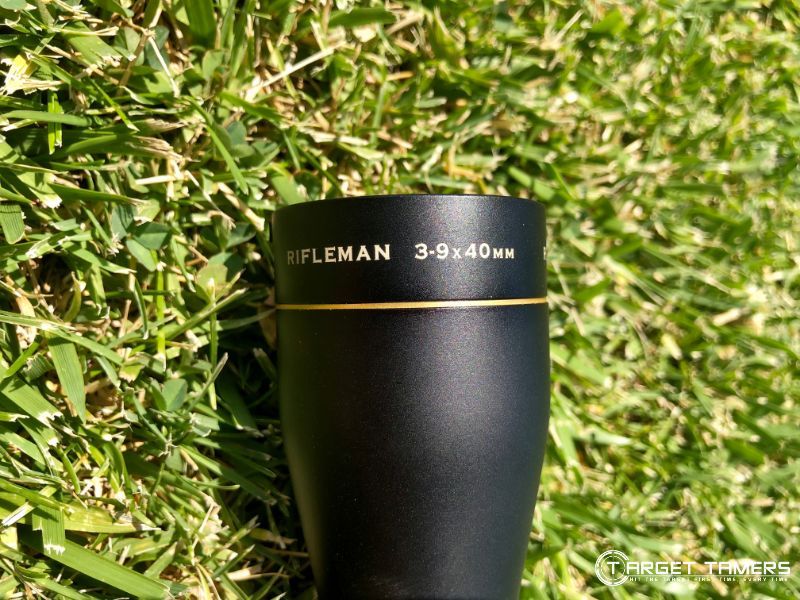
If you're looking for a more versatile and all-purpose rifle scope that does its best in any light, terrain, and hunting situation, then you'd probably do best in the mid-range objective lens size. The most common and popular model would be the 3-9X40 with the 2.5-10X40 hot on its heels. If you're a little on the fence about it, going to a 3-9X36 or a 4-12X44 would give you a little bit of variety.
But, for those who want to maximize any potential of light gathering capabilities with any light of day, a larger objective diameter lens will provide more light than you can use, plus some extra perks.
If you were only in it for what the human eyes are capable of, then everyone should just go with a fixed 6X42 scope. You'll have a 7 mm exit pupil that'll do its job in the darkest light of night.
The problem is, everyone's eyes are different and you can't measure one scope with another unless the hunting conditions are exactly the same and the scope and glass quality are identical. This brings us into some important factors to consider once you've chosen what size objective diameter you want.
The Bottom Line on Objective Lenses
Once you've made your decision about what size objective lens will best suit your hunting needs and budget, you should know a thing or two more about the topic.
The first is, you must remember that the optical quality of the rifle scope plays a larger role than objective size. A rifle scope with a medium objective lens with excellent, pure, high-end glass will always out-perform the scope with large objective lens with poor quality glass. And the same vice versa.
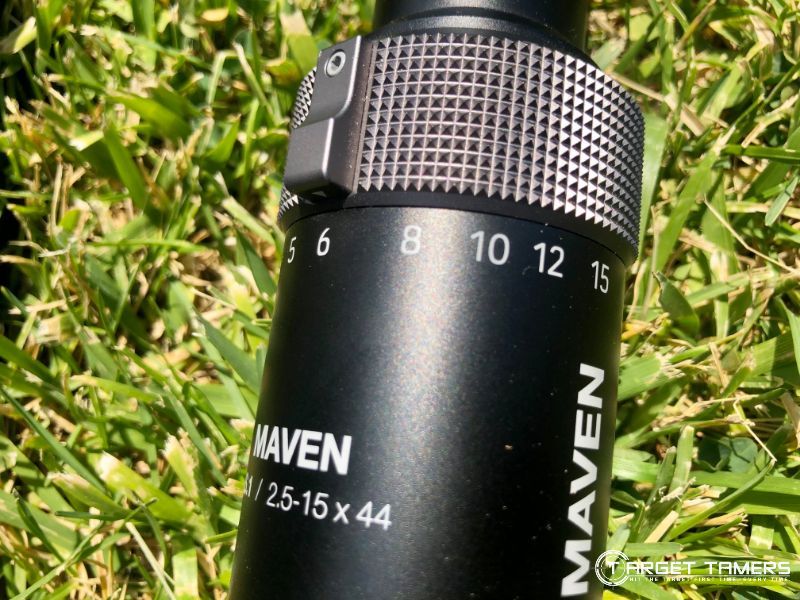
Secondly, if you opted for a larger exit pupil scope resulting from high magnification and large diameter lens size, you should remember to check what your local or state laws are regarding low light hunting.
When you get a big boy scope it's easy to come down with a case of the Cocky Hunter syndrome. Just because you have what it takes to hunt longer with possibly brighter optics doesn't always mean you should take that long distance shot, especially while hunting under poor conditions.
Animals don't always go down where they're shot, leaving you to track your trophy in the dark or worst case scenario, having to track a wounded animal because you may have missed your kill zone. Have a winning, go-getter attitude but stay humble. You'll be a better hunter for it.
So, Does Size Matter?
It absolutely does. In the end, only you and your pair of eyes will determine which scope, magnification, objective lens size, exit pupil, and scope clearance will work for you. Borrow, shop, compare, and get your mitts on various scopes to get some hands and eyes-on experience that'll fit within your budget.
Learn how to MOUNT & SIGHT your rifle scope correctly.
Further Reading




Gun is only as good as it's sights
I'm sorry I disagree with some scientific opinions It's the same as with the story of the old man and the fiddle.make a worn out looking, or cheap$300 fiddle sound as good as a $10,000 fiddle. You in some circumstances can take a cheap scope and put in an expert Marksman's hands and get the job accomplished. It depends on the marksman not the name, size, or price. I've been in occupations, as well as being an avid hunter before and after my previous occupations. But yes some higher quality scopes gives some advantage.